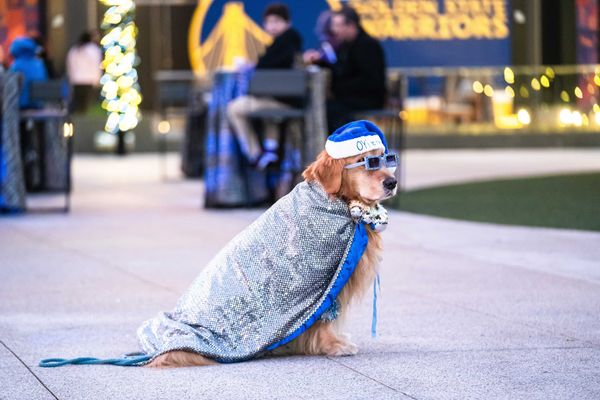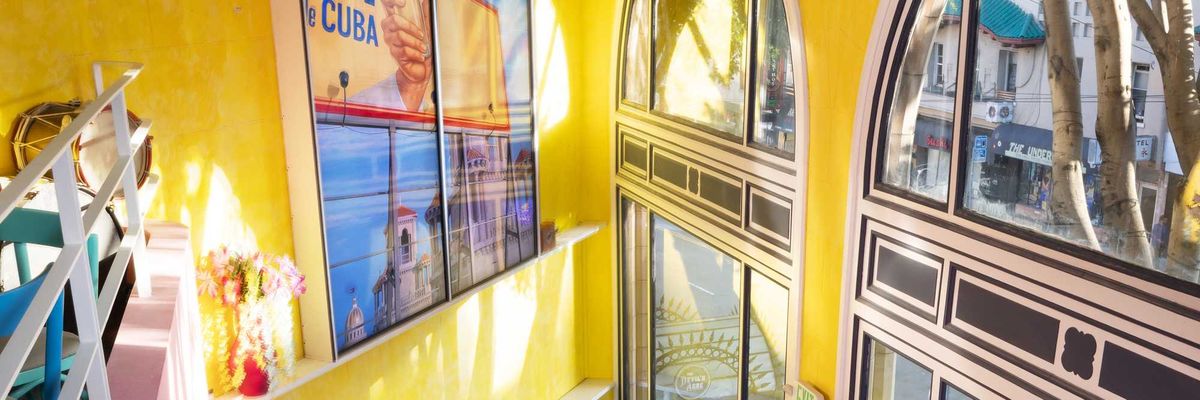Photography has not been considered “fine art” for all that long, FAMSF board president Dede Wilsey candidly reminded the press last Thursday. By most counts, the mechanical art form joined the ranks of painting just about thirty years ago. Its inclusion in the museum evidently took some prolonged getting used to among the FAMSF higher ups, but the De Young is now fully resolved to welcome the medium, with chief curator (and photography expert) Julian Cox proudly at the helm.
The only problem is, the De Young doesn’t have very much of it yet. The institution does, however, have an ace in the hole: Trevor Traina, Wilsey’s son.
In the late 1970s, Traina began a lifelong photography binge, collecting at a rate and breadth that would be impossible for any individual person (Gertrude Stein excluded) in the more prohibitively expensive world of painting. So comprehensive is Traina’s collection, Cox and art historian Kevin Moore (who also serves as Traina’s art adviser) were able to cull a full size, world class exhibition from it – one that holds its own, even against the deep stores of neighbor SFMOMA.
Real to Real: Photographs from the Traina Collection is far from just a tour of one man’s taste. Drawing about 110 works by seminal masters and rising young artists alike, Cox and Moore have crafted a thematically devised show that thoughtfully investigates the development of photography’s core concerns over the years.
Ryan McGinley, BMX, 2000, Chromogenic print ,32 3/4 x 42 in. (83.2 x 106.7 cm) Courtesy of the artist and Ratio 3, San Francisco
Real to Real is divided into 4 categorically distinct rooms, each of which comprises a different face of the ever-evolving experiment in representation that is photography. The exhibition is loaded with gems and has several trails of thought running through it, so, while it is manageably sized, give yourself plenty of time to absorb it.
The first section, “Everyday,” charts the documentary impulse in photography – the goal shared by artists like Danny Lyon and Diane Arbus to capture common scenes of life in a way that the mass media would not, and in so doing reveal things that might otherwise go unseen. Then, “Excesses” finds photography embracing the fact of its own artifice, as in Cindy Sherman’s trailblazing explorations of personal identity and David Lachapelle’s comically absurd, baroque tableaus – what the artist chalks up to “candy for the eyes.”
“Spectacular” includes the photographs of unprecedented size and high fidelity that became possible in the 1980s, such as Andreas Gursky’s photographs of crowds at raves and sporting events, many of which addressed themes of mass media influence. Finally, “Losses” addresses the inherently elegiac nature of photography – as artist Alec Soth described it in his portraiture work, the desire to hold on to moments in life through photographic capture; a longing for something already passed.
Roe Etheridge, Thanksgiving 1984 (Green Dress), 2009, Chromogenic print
44 x 33 in. (111.8 x 83.8 cm), Courtesy of the artist and Andrew Kreps Gallery
Underlying the various photographic endeavors showcased in the exhibition is a common spirit of self-interrogation; a querying refrain of “what am I?” – the very same one that animated the Impressionists whose works invaded the De Young last year. You’ll see it, most hauntingly, in Arbus’ at once compelling and unsettling photograph of identical twin girls, in Hiroshi Sugimoto’s arrestingly realistic photograph of Queen Elizabeth II’s wax doppelganger, and in Jeff Wall’s huge, backlit photograph of a snow-dusted Slavic church, looming religiously in the no man’s land between illusion and reality.
Real to Real: Photographs from the Traina Collection runs through September 16 at the De Young Museum























